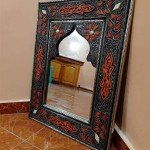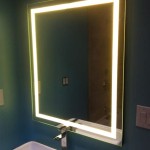Can Convex Mirrors Magnify?
Convex mirrors, characterized by their outward curvature, possess distinct optical properties that differentiate them from concave mirrors. While concave mirrors can produce magnified images under certain conditions, convex mirrors operate differently. This article explores the magnification properties of convex mirrors and explains the underlying principles governing their image formation.
Image Formation in Convex Mirrors
Convex mirrors always produce virtual, upright, and diminished images, regardless of the object's position. A virtual image is one that cannot be projected onto a screen, as the light rays reflecting off the mirror do not actually converge to form the image. Instead, they appear to diverge from a point behind the mirror. This behavior is a direct consequence of the diverging nature of reflected rays from a convex surface. The image appears upright, meaning its orientation is the same as the object's, unlike inverted images sometimes produced by concave mirrors.
Understanding Magnification
Magnification is a quantitative measure of how much larger or smaller an image appears compared to the original object. It is defined as the ratio of the image height (hi) to the object height (ho). A magnification greater than 1 indicates enlargement, while a magnification between 0 and 1 indicates a reduction in size. A negative magnification typically signifies an inverted image. For convex mirrors, the magnification is always positive and less than 1, confirming the diminished nature of the images they produce.
The Role of Focal Length
The focal length of a mirror, denoted by 'f', is a crucial parameter in determining its optical behavior. For convex mirrors, the focal length is considered negative, reflecting the diverging nature of the reflected rays. The relationship between the object distance (do), image distance (di), and focal length is governed by the mirror equation: 1/do + 1/di = 1/f. Since the focal length is negative for convex mirrors, the image distance is also always negative, further confirming the virtual nature of the image.
Magnification Formula for Convex Mirrors
The magnification (M) of a convex mirror can also be expressed in terms of the object distance and image distance: M = -di/do. Given that di is always negative for convex mirrors, and do is positive, the magnification will always be positive and less than 1. This mathematical relationship reinforces the observation that convex mirrors always produce diminished images.
Practical Applications of Convex Mirrors
The unique properties of convex mirrors make them suitable for various applications where a wider field of view is desirable. For example, they are commonly used as security mirrors in shops and as passenger-side mirrors in vehicles. The diminished image allows a larger area to be viewed, enhancing situational awareness. The "objects in mirror are closer than they appear" warning on passenger-side mirrors acknowledges the reduced image size, reminding drivers that the actual distance to objects is greater than their apparent distance in the mirror.
Comparing Convex and Concave Mirrors
A key distinction between convex and concave mirrors lies in their image formation capabilities. Concave mirrors can produce both real and virtual images, and these images can be magnified, diminished, or the same size as the object, depending on the object's position relative to the focal point. Convex mirrors, on the other hand, consistently produce only virtual, upright, and diminished images. This difference stems from the fundamental difference in their shapes: concave mirrors converge incoming light rays, while convex mirrors diverge them.
The Impact of Object Distance
While a convex mirror always produces a diminished image, the degree of diminishment varies with the object distance. As the object moves closer to the mirror, the image also moves closer to the mirror and becomes slightly larger. However, it remains smaller than the object. Conversely, as the object moves farther away, the image recedes towards the focal point and becomes smaller. This variation in image size, while subtle, is a consequence of the changing relationship between object distance and image distance as dictated by the mirror equation.
The Wider Field of View
The diverging nature of reflected light rays from a convex mirror results in a wider field of view compared to a plane mirror of the same size. This wider field of view is a crucial advantage in applications like security mirrors and car mirrors, allowing observers to see a larger area. The diminished image size is a trade-off for this expanded field of vision, enabling a more comprehensive view of the surroundings.
Can A Convex Mirror Form Magnified Image Quora
Can A Convex Mirror Form Magnified Image Quora

Magnification Produced By A Convex Mirror Is Always Equal To1b Less Than 1c More 1d Zero

Convex Lens Use Magnifying Glass

Mirror Magnification 101 Baci

Difference Between Concave And Convex Lens Tutorreal

Mirror Formula And Magnification Geeksforgeeks
Can Convex Mirrors Ever Produce Real Images Inverted Magnified Quora
Can A Convex Mirror Produce Real Image When The Object Is Virtual And Vice Versa Concave If Yes How Will It Be Possible Why Quora

Convex Mirror Study Guide Inspirit Learning Inc








